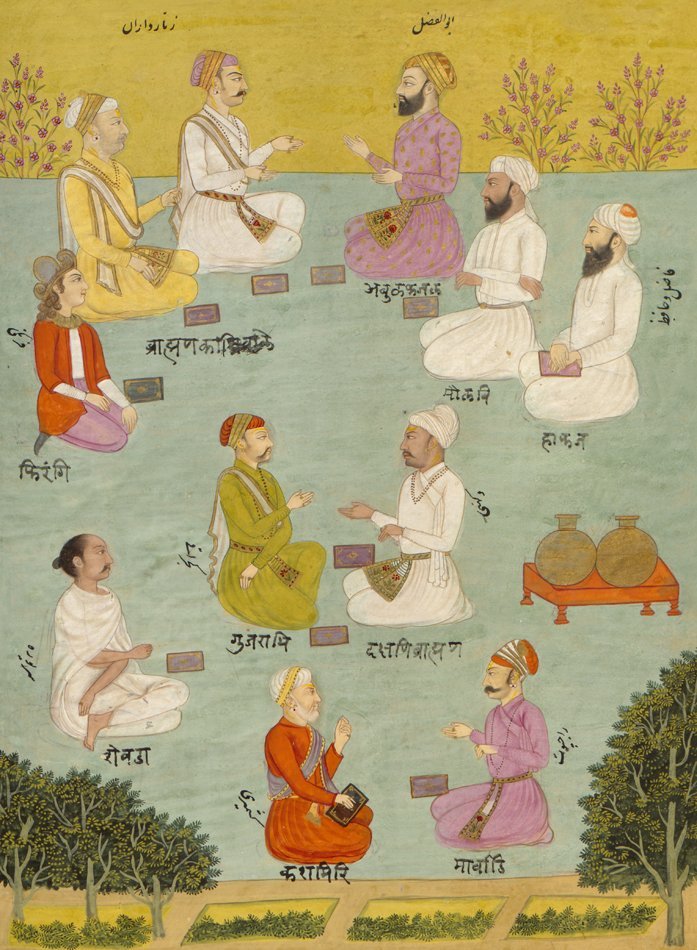Cosmopolitanism and National Identities
Ink opaque watercolor and gold on paper (mid-18th century)
Razm-nāma is a Persian translation of the Sanskrit epic Mahabharata commissioned by the Mughal Emperor Akbar (r.1556-1605). The miniature used in the poster for this exhibit is reproduced from an 18th-century illustrated copy of Razm-nāma. It depicts a conversation between scholars from a wide range of backgrounds. With Abu’l Fazl, Akbar’s grand vizier and the official historian of the empire sitting at the top, this painting celebrates the cosmopolitan cultural outlook of Akbar’s reign.
Many of the illustrations in this copy have inscriptions in both Nastaliq and Devanagari indicating the identity of the figures in the picture. A common practice in early modern South Asia, the copresence of the two scripts, just like the translation of the epic itself, also attests to ‘meeting of the two oceans’, i.e., Persian and Sanskrit intellectual traditions. Interestingly, the two types of inscriptions do not always match exactly. In the case of the figure at the bottom-right, for instance, the Devanagari reads mārvāḍi (Marwari) while the Nastaliq reads rājapūta (Rajput).
Acrylic by Syed Mohammed Anwer. Islamabad: Wahdat Foundation, 2015
Samrup Rachna (lit. creation of the same form) is a contemporary collection of calligraphic works. The calligrapher writes the Hindi/Urdu word divālī (Diwali, the traditional Hindu festival of lights) in both Nastaliq and Devanagari scripts and combines the two into the shape of a lamp.
The calligraphic fusion of scripts here is worth our particular notice. While Nastaliq has a strong tradition of calligraphy across the Persianate world, Devanagari does not. Nevertheless, these two scripts had both been used in precolonial times to write a group of North-Indian dialects that had blood relations with each other. Out of this group of tongues were born the modern Hindi/Urdu. As the linguistic boundary between Hindi and Urdu stiffened with the rise of nationalism in the subcontinent in the 19th century, scripts came to be more and more distinctively associated with one particular language and community: Devanagari with Hindi and the Hindus, Nastaliq with Urdu and the Muslims. The idea of a shared history of languages and scripts, however, remains alive. By connecting ‘Hindi-Urdu’ with a hyphen and by calling it apni boli (apanī bolī, one’s own language), the calligrapher provides a specimen illustrating the popular awareness of a common linguistic identity.

![Plate from Samrup Rachna: Calligraphic Expression of Apni Boli [Hindi-Urdu], Islamabad: Wahdat Foundation, 2015.](/media/images/20180827140721_002.original.jpg)